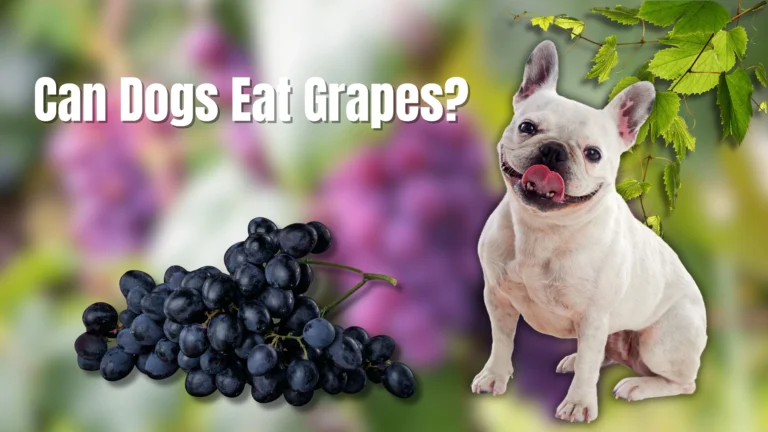Can Dogs Eat Cantaloupe?
Cantaloupe is a safe and healthy treat for dogs when given in moderation. It’s low in calories and packed with essential nutrients like vitamins A, and C, and dietary fiber, making it a refreshing snack, especially on hot days. Can Dogs Eat Cantaloupe? However, since cantaloupe is high in sugar, owners should be cautious, especially if their dog is overweight or diabetic. Consulting a vet before offering new food, including cantaloupe, is always a good idea.
While cantaloupe seeds are generally harmless, they can pose a choking hazard, so it’s best to avoid intentionally feeding them to your dog. Cantaloupe’s high water content can also aid in hydration, promoting better digestion. However, too much cantaloupe can upset a dog’s stomach, so it’s important to introduce it gradually and observe for any signs of digestive trouble.
In addition to cantaloupe, watermelon is another safe fruit for dogs, provided it’s served without seeds and in moderation. Always ensure your dog’s diet remains balanced and that treats like melon don’t make up more than a small portion of their meals.
Are Melons Good for Dogs?
Melons, particularly cantaloupe, can be a hydrating and nutritious treat for dogs when offered in moderation. Packed with essential nutrients such as vitamins A, B6, C, and K, as well as minerals like potassium, magnesium, and folic acid, cantaloupe supports a range of health benefits for dogs. Its high water content, roughly 90%, helps with hydration, especially on hot days, while the fiber aids digestion and prevents constipation. The antioxidants present, such as beta-carotene, play a significant role in reducing inflammation, promoting healthy cell function, and potentially slowing down the aging process in dogs.
While cantaloupe offers numerous health benefits, including being low in calories and free of fat and cholesterol, it is important to limit its intake. The natural sugars present in cantaloupe can pose a risk for dogs, particularly those with obesity or diabetes, so it’s best to consult a vet before incorporating it regularly into a dog’s diet. For most healthy dogs, small, bite-sized portions of cantaloupe flesh, free of rind, make for a refreshing, low-calorie snack that can be both satisfying and beneficial.
How to Offer Melon to Your Dog?
Before offering cantaloupe to your dog, it’s important to prepare it properly by removing the seeds and rind, which can pose choking hazards and are hard for dogs to digest. Once prepared, cut the melon into small chunks to ensure easy consumption. For first-time eaters, monitor your dog closely to ensure they react well, as any unusual signs should prompt a quick call to the vet. While melon can be a hydrating and nutritious treat, always feed it in moderation and after consulting with your vet.
Cantaloupe can be a versatile addition to your dog’s snack routine, especially during hot weather. You can get creative by incorporating it into fun treats like mashed food toppers, frozen Kong toys, or even smoothies mixed with other dog-safe fruits. Another option is blending cantaloupe with plain yogurt for a refreshing treat or freezing it into doggy popsicles and ice cream. For a longer-lasting snack, dehydrated cantaloupe can work, though be cautious about the concentrated sugar levels.
When feeding your dog cantaloupe, aim for small portions and remember that treats should only make up 10% of your dog’s daily intake. While cantaloupe offers hydration, antioxidants, and essential nutrients, it shouldn’t replace a balanced dog food diet. Whether you’re hand-feeding small pieces or creating a nutritious sorbet, keeping the portions small and mindful of your dog’s health is key to enjoying this sweet, healthy fruit safely.

The Dangers of Eating Cantaloupe
Cantaloupe can be a healthy and refreshing treat for most dogs, but there are a few important risks to keep in mind. The rind of the cantaloupe is tough and fibrous, posing a choking hazard and potential for gastrointestinal blockages, so it must always be removed. Additionally, while cantaloupe is high in fiber, overconsumption can lead to digestive issues like diarrhea, gas, or stomach cramps. As with any treat, moderation is key to preventing these problems, and portion control is especially important for smaller dogs to avoid choking.
Another concern is the high sugar content found in cantaloupe. This makes it a poor choice for dogs with diabetes, obesity, or other health issues related to sugar intake. Excessive sugar consumption over time can also contribute to long-term problems such as dental issues or weight gain in healthy dogs. Always consult your veterinarian before introducing cantaloupe or any new food to a dog with specific health concerns to ensure it aligns with their dietary needs.
While cantaloupe offers a wealth of benefits like hydration and fiber, it’s essential to take precautions when serving it. Remove the seeds and cut the melon into small, manageable pieces to reduce choking risks. For most healthy dogs, it can be a great occasional snack, but always stay mindful of portion sizes and your dog’s overall health to prevent any negative side effects.

How many cantaloupes Can Dogs Eat?
When feeding your dog cantaloupe, it’s essential to do so in moderation. Although this fruit offers nutritional benefits, it should only make up 10% of their overall diet, with the remaining 90% coming from a well-balanced dog food. Cantaloupe is high in natural sugars, making it a treat best served occasionally. It’s particularly important to avoid giving cantaloupe to diabetic dogs due to its 8% sugar content, which can spike blood sugar levels.
Serving sizes for cantaloupe vary depending on the size of the dog. For extra-small dogs, like Yorkies or Chihuahuas, one or two bite-sized pieces (around 1/2-inch cubes) is sufficient. Medium-sized dogs, such as Border Collies or Australian Cattle Dogs, can enjoy up to five pieces, while larger breeds like German Shepherds or Labradors can safely have up to six. For extra-large dogs, such as St. Bernards or Great Pyrenees, a handful of cantaloupe pieces is a good portion. Always watch for any signs of digestive upset, as too much cantaloupe may lead to diarrhea or vomiting due to its high fiber content.
Cantaloupe can be a refreshing, healthy snack for your dog, but it should never be overdone. Its high sugar content and fiber, while beneficial in small amounts, can upset your dog’s stomach if they overeat. Following the 10% rule ensures that treats, including cantaloupe, complement rather than replace the main nutritional value found in a balanced dog food diet.
What If Your Dog Ate Too Much Cantaloupe?
While cantaloupe is a healthy and refreshing snack for dogs, it’s important to serve it in moderation to avoid gastrointestinal issues. Overindulgence can lead to diarrhea, vomiting, or even a painful, distended stomach. In some cases, dogs might lose their appetite or become lethargic. If your dog shows any of these symptoms, it’s crucial to contact a veterinarian for advice. Additionally, although rare, some dogs may develop an allergic reaction, showing signs such as skin irritation, swelling, or difficulty breathing, which would also require immediate veterinary attention.
The high sugar content in cantaloupe, approximately 7.8 grams per 100 grams, means that too much can easily lead to digestive issues or weight gain. To prevent this, stick to small, occasional treats, particularly in summer when cantaloupe can be a hydrating snack. Dogs that consume excessive fiber may experience changes in their bowel movements, from constipation to more severe complications like intestinal obstruction. Keeping melon portions limited will help avoid these risks, as well as the possibility of choking on seeds or rind. Always remove the rind before serving, as it is indigestible and can cause serious health issues, such as gastrointestinal upset or obstructions that may require medical intervention.
For safe enjoyment, always cut cantaloupe into small, bite-sized pieces to minimize choking risks. Dogs, especially those prone to gobbling food quickly, benefit from these smaller servings. Keeping portions appropriate will ensure your dog can enjoy the benefits of this fruit without negative side effects.







